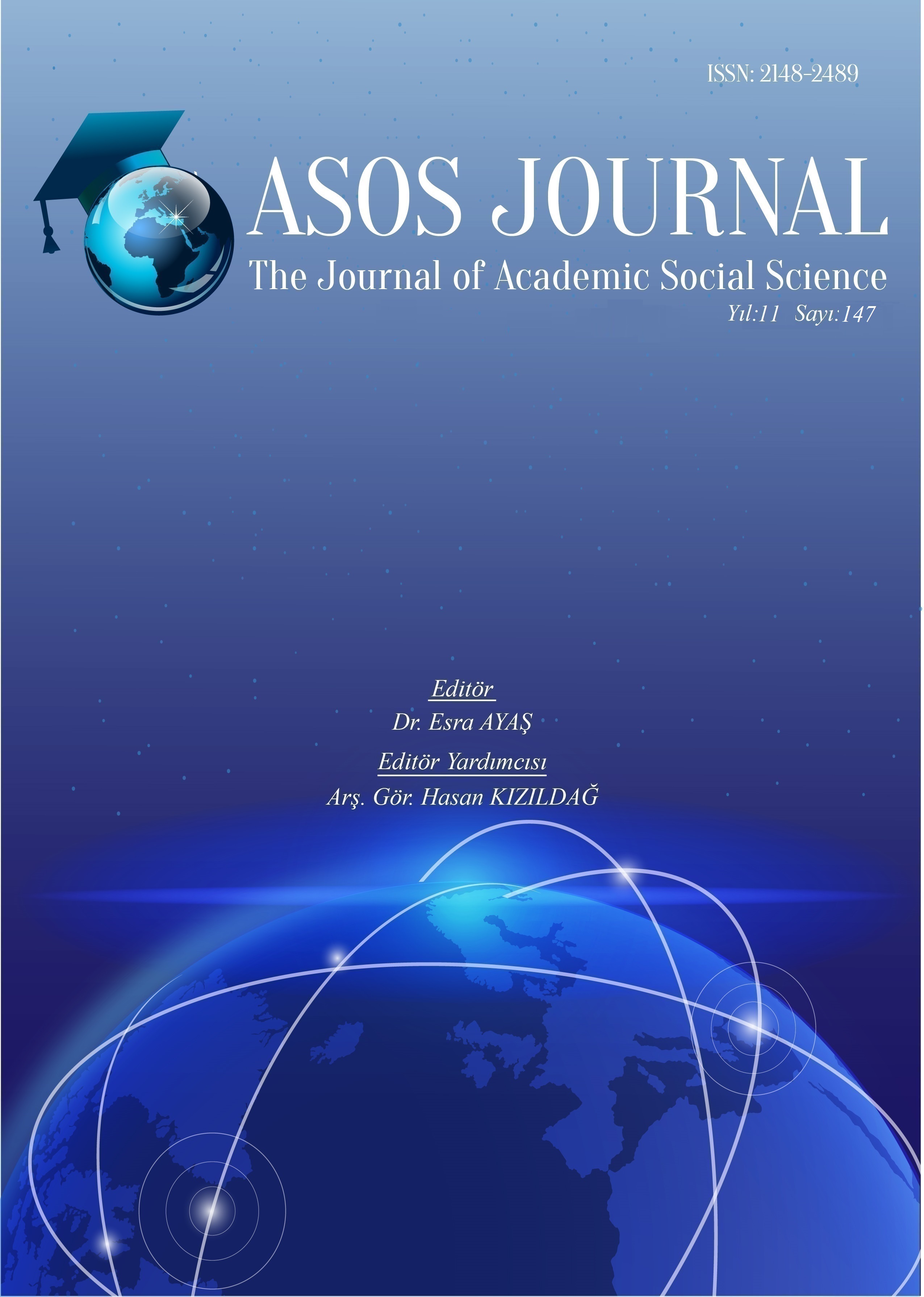YAPAY ZEKA UYGULAMALARININ DENEYSEL TASARIM ATÖLYESİ DERSLERİNE ENTEGRASYONU: ÖĞRENCİ BAKIŞ AÇISIYLA DEĞERLENDİRME
Author :
Abstract
Çağımızın en önemli gelişmelerinden biri olan yapay zeka uygulamalarının hakkındaki tartışmalara her geçen gün yenileri eklenmektedir. Bu uygulamaların sanat ve tasarım üzerinde yarattığı ve yaratacağı etkiler de bu tartışmalardan bir tanesidir. Bu makale çalışması yapay zeka uygulamalarını bir araç olarak nitelendirerek tasarım eğitimine disiplinlerarsı bir yöntem olarak entegre edilmesi konusunda öneriler sunmak amacıyla gerçekleştirilmiştir. Çalışmada deneysel tasarım atölyelerinin disiplinlerarası yapısından bahsedilercek, yapay zekanın tanımı yapılacak ve yapay zeka uygulamalarının sanat ve tasarım alanına etkileri tartışılacaktır. Daha sonra deneysel tasarım atölye dersleri içerisinde bir proje çalışması gerçekleştirilecek, bu projenin çıktıları makale içerisinde değerlendirilecektir. Çalışmada Görsel İletişim Tasarımı bölümü üçüncü sınıf öğrencilerinin atölye dersinde bir projelerinin üretim sürecinde yapay zeka uygulamalarından faydalanmaları ve öğrencilerin bu deneyimleri hakkında bir rapor hazırlamaları beklenecektir. Proje sürecinde öğrencilerin yapay zeka uygulamalarını kullanma konusunda teknik bilgileri edinmeleri, algoritma mantığını kavramaları, bu uygulamaları tasarımlarına hangi ölçüde dahil edebilecekleri konusunda fikir sahibi olmaları amaçlanmaktadır. Proje sonuçlandığında öğrencilerin uygulama ile ürettiği tasarımlar ve deneyimlerini anlattıkları raporlar incelenerek öğrencilerin bu deneyimleri tartışalacaktır. Bu makale çalışmasının sonucunda hem öğrencilerin yapay zekanın potansiyelini keşfetmesi eve teknolojik gelişmeleri takip eden güncel bir eğitim almaları teşvik edilmiş olacaktır hem de bu uygulamaların tasarım eğitimine dahil edilmesinin proje bazlı bir denemesi yapılmış olacaktır. Bu çalışma yapay zeka uygulamalarının tasarım sürecine bir araç olarak dahil edilmesine bir örnek teşkil etmeyi hedeflemektedir.
Keywords
Abstract
New discussions about artificial intelligence applications, one of the most important developments of our age, are added every day. The effects that these applications have and will have on art and design is one of these discussions. This article was carried out in order to describe artificial intelligence applications as a tool and to offer suggestions on integrating them into design education as an interdisciplinary method. In the study, the interdisciplinary structure of experimental design workshops will be mentioned, artificial intelligence will be defined and the effects of artificial intelligence applications on the field of art and design will be discussed. Then, a project study will be carried out within the experimental design workshop courses, and the outputs of this project will be evaluated in the article. In the study, third-year students of the Visual Communication Design department will be expected to benefit from artificial intelligence applications during the production process of a project in the workshop course and the students will be expected to prepare a report about their experiences. During the project, it is aimed for students to acquire technical knowledge about using artificial intelligence applications, to understand the logic of the algorithm, and to have an idea about the extent to which they can include these applications in their designs. When the project is completed, the designs produced by the students through the application and the reports in which they describe their experiences will be examined and these experiences of the students will be discussed. As a result of this article, students will be encouraged to discover the potential of artificial intelligence and receive an up-to-date education that follows technological developments, and a project-based trial of the inclusion of these applications in design education will be made. This study aims to provide an example of including artificial intelligence applications as a tool in the design process.





